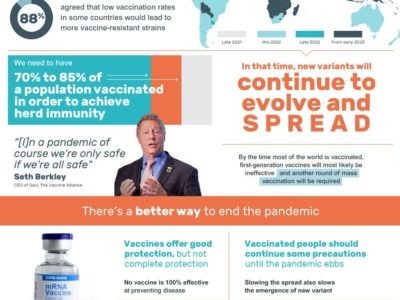
Since we don’t know who could be at risk of developing severe COVID-19 symptoms, how can we effectively roll out a vaccine? Genetics has a hopeful window into the future of medical treatment. Understanding genetic testing and it’s relation to predicting severe COVID-19 risk could change the way we distribute the COVID vaccine.
What does it take to achieve herd immunity? According to most medical experts, a population needs 70% to 85% of its members vaccinated to reach the goal of herd immunity. But with vaccination rates going so slowly, new variants will trigger the need for another round of mass vaccination. If the second round does not move faster than its predecessor, the pattern will continue.
With all this headache surrounding the actions of billions around the world, vaccines alone can’t be trusted to protect some people. Understanding COVID-19 risk is vital for people with a wide variety of health conditions. Those with chronic lung disease, diabetes, heart conditions, and compromised immune systems are the most vulnerable when it comes to infection and severe disease. Even as the rest of the country goes back to normal, these people may want to continue social distancing and avoiding crowds.
That said, not every individual with one of these conditions will develop severe COVID-19. As many as one quarter of adults could be incorrectly categorized for their risk of developing severe COVID-19. Lucky for them, a genetic COVID-19 test can help. This at-home test kit considers 16 comorbidities and genetic markers. The test can improve risk prediction by 25% over standard clinical models.
The post How Genetic Testing is the New Era of Medical Tech appeared first on Social Media Explorer.
* This article was originally published here
(” Learn How to Make Money With Affiliate Marketing – http://bit.ly/make_online_now “)
.jpg)
Comments are closed.